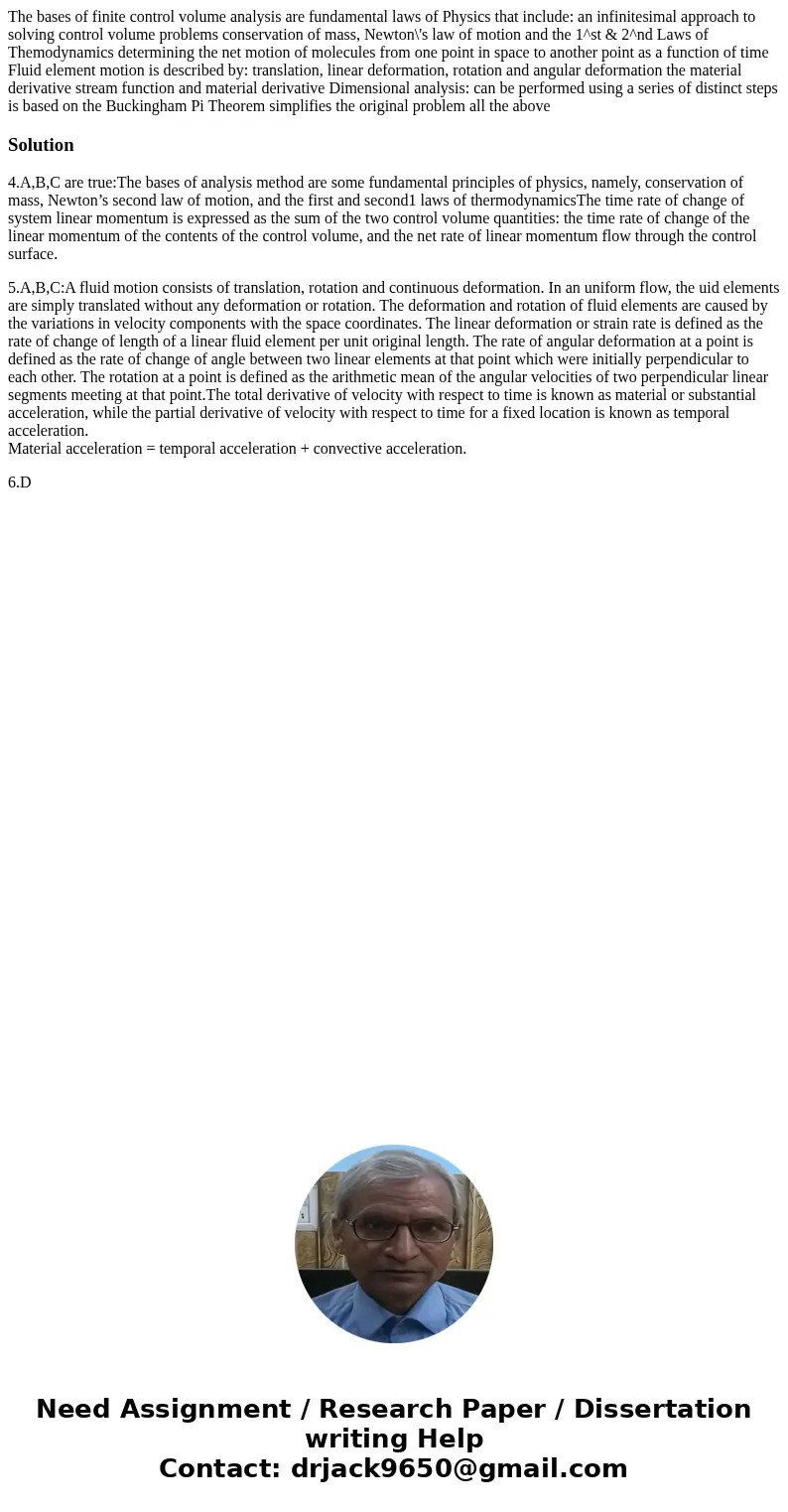The bases of finite control volume analysis are fundamental
Solution
4.A,B,C are true:The bases of analysis method are some fundamental principles of physics, namely, conservation of mass, Newton’s second law of motion, and the first and second1 laws of thermodynamicsThe time rate of change of system linear momentum is expressed as the sum of the two control volume quantities: the time rate of change of the linear momentum of the contents of the control volume, and the net rate of linear momentum flow through the control surface.
5.A,B,C:A fluid motion consists of translation, rotation and continuous deformation. In an uniform flow, the uid elements are simply translated without any deformation or rotation. The deformation and rotation of fluid elements are caused by the variations in velocity components with the space coordinates. The linear deformation or strain rate is defined as the rate of change of length of a linear fluid element per unit original length. The rate of angular deformation at a point is defined as the rate of change of angle between two linear elements at that point which were initially perpendicular to each other. The rotation at a point is defined as the arithmetic mean of the angular velocities of two perpendicular linear segments meeting at that point.The total derivative of velocity with respect to time is known as material or substantial acceleration, while the partial derivative of velocity with respect to time for a fixed location is known as temporal acceleration.
Material acceleration = temporal acceleration + convective acceleration.
6.D

 Homework Sourse
Homework Sourse